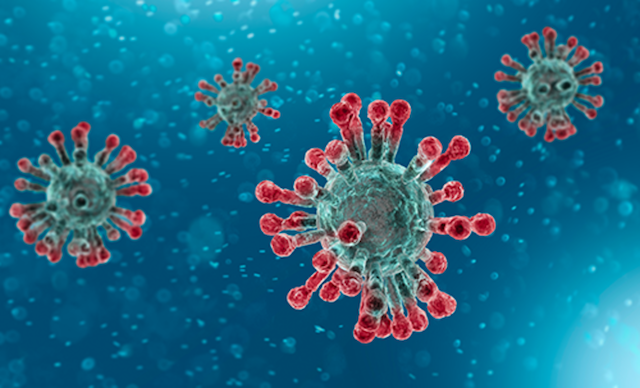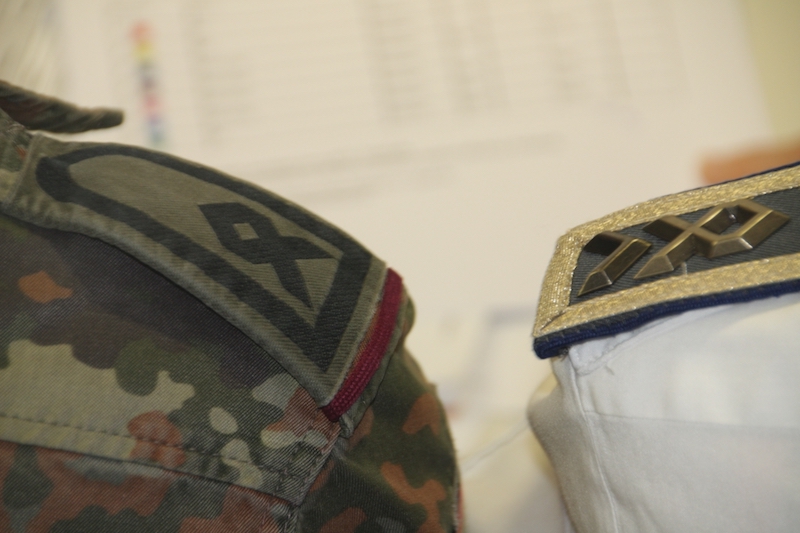Get the weekly SPARTANAT newsletter.
Your bonus: the free E-Book from SPARTANAT.

In early February, research groups from the Charité – Universitätsmedizin Berlin, the Munich Clinic Schwabing, and the Institute for Microbiology of the Bundeswehr (InstMikroBioBw) presented their findings on the easy transmissibility of SARS-CoV-2 to the public. Their detailed observations of the course of infection in the first group of COVID-19 patients in Germany have now been published in the journal Nature*. Based on these findings, criteria can be developed to determine when COVID-19 patients could be discharged from the hospital in cases of limited bed capacity.
In late January, the first interconnected COVID-19 cases in Germany were reported in the district of Starnberg near Munich. Nine patients in this so-called Munich case group were subsequently treated at Munich Clinic Schwabing. "At that time, we really knew very little about the novel coronavirus, which we now know as SARS-CoV-2," said Prof. Dr. Christian Drosten, Director of the Institute of Virology on the Campus Charité Mitte and one of the two lead authors of the study. "We therefore closely examined these nine cases virologically throughout their illness and gained many important details about the new virus."
"The patients we treated were younger to middle-aged. They generally showed mild symptoms and flu-like symptoms such as cough and fever, as well as a disrupted sense of smell and taste," explained the second lead author of the publication, Prof. Dr. Clemens Wendtner, Chief Physician of Infectiology and Tropical Medicine at Munich Clinic Schwabing, an academic teaching hospital of Ludwig-Maximilians-University. "For the scientific validity of our study, it was advantageous that all cases were connected to an index patient and were not just examined based on certain symptoms. This allowed us to get a good picture of the virological events and gain important insights, for example, on the virus's transmissibility."
For this purpose, swabs were taken from the patients' nasopharynx and samples of cough expectoration were collected daily throughout the infection course - up to 28 days after symptom onset. Additionally, stool, blood, and urine samples were collected whenever possible and feasible. All samples were then independently analyzed for SARS-CoV-2 in two labs: at the Institute of Virology on the Campus Charité Mitte in Berlin and at the Institute for Microbiology of the Bundeswehr in Munich, a facility of the German Center for Infection Research (DZIF).
As the research group observed, the virus shedding in the throat of COVID-19 patients during the first week after symptom onset was very high. Large amounts of viral genetic material could also be detected in cough expectoration. Infectious virus particles could be isolated from both throat swabs and cough expectoration. "This means that the new coronavirus can multiply not only in the lungs but already in the throat and is therefore highly transmissible," explains Prof. Drosten, who is also a DZIF scientist and Professor at the Berlin Institute of Health (BIH). Due to the genetic similarity to the original SARS virus, the research group initially assumed that the new coronavirus, like the old SARS virus, only affects the lungs and therefore cannot be easily transmitted from one person to another. "Our examination of the Munich case group instead showed that the new SARS coronavirus differs greatly from the old one with regard to the affected tissue," the virologist says. "This has significant implications for the spread of the infection, which is why we announced our findings at the beginning of February."
In most cases, the virus load in the throat decreased significantly over the first week of illness. Virus shedding in the lungs also decreased, but later than in the throat. From day 8 after symptom onset, the researchers were no longer able to isolate infectious virus particles - although viral genetic material could still be detected in the throat and lungs. It was observed that when the samples contained less than 100,000 copies of viral genetic material, no infectious viruses could be detected. This leads to two conclusions: "The high virus load in the throat at the beginning of symptoms suggests that COVID-19 patients are already very infectious early on, possibly even before they realize they are sick," explains Chief Medical Officer Associate Professor Dr. Roman Wölfel, Director of the Institute for Microbiology of the Bundeswehr and one of the lead authors of the study. "At the same time, the infectivity of COVID-19 patients seems to depend on the virus load in the throat or lungs. This is an important factor in deciding when a patient can be discharged from the hospital early in case of limited bed capacity and time pressure." Based on this data, the authors of the study suggest that COVID-19 patients can be discharged to home quarantine if less than 100,000 copies of viral genetic material can be detected in cough expectoration after the 10th day of illness.
Furthermore, as the researchers showed, SARS-CoV-2 likely multiplies in the gastrointestinal tract. However, no infectious viruses were found in the patients' stool. The virus was not found in blood and urine samples. The patients' blood sera were also tested for antibodies against SARS-CoV-2. Half of the patient group developed antibodies against the virus by the 7th day after symptom onset, and all patients had produced antibodies within two weeks. With the onset of antibody production, there was a gradual decrease in virus load.
The research groups from Munich and Berlin plan to further investigate the development of long-term immunity against SARS-CoV-2 in the first German case group and in additional patients. These analyses will be crucial for the development of vaccines.
The publication:
 ABC Defense and Medical Services - Getting Through the Crisis Together
ABC Defense and Medical Services - Getting Through the Crisis Together
Since the beginning of March 2020, specialized soldiers from the ABC defense forces of the Bundeswehr have been supporting the Institute for Microbiology of the Bundeswehr (InstMikroBioBw) in COVID-19 diagnostics.
Since the start of the epidemic of the novel coronavirus in Germany, the Institute for Microbiology of the Bundeswehr in Munich has been continuously and tirelessly in operation. On some days, several hundred patient samples from all over Germany are examined. To support the personnel of InstMikroBioBw, the Bundeswehr's ABC Defense Command offered its assistance right at the beginning of the corona outbreak: Specialized laboratory personnel from the ABC defense forces could be quickly and easily sent to Munich in the current situation.
Since early March, up to three soldiers from the School for ABC Defense and Civil Protection Duties in Sonthofen, as well as from ABC Defense Battalion 750 "Baden" in Bruchsal, have been deployed at the Institute. The team at InstMikroBioBw is already well acquainted with the comrades from previous joint exercises. In the central diagnostics area, the technical assistants from the Medical Service and ABC Defense work hand in hand. And the knowledgeable ABC defense personnel contribute to scientific support as well. InstMikroBioBw hopes that this cooperation can be maintained and expanded further. We already say: "Thank you, comrades!"
The Institute for Microbiology of the Bundeswehr online: instmikrobiobw.de
The Bundeswehr online: www.bundeswehr.de
SPARTANAT is the online magazine for Military News, Tactical Life, Gear & Reviews.
Send us your news: [email protected]
Ad
similar
Get the weekly SPARTANAT newsletter.
Your bonus: the free E-Book from SPARTANAT.


